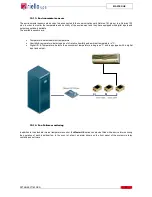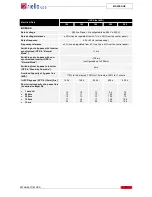
MASTER HE
SPTMHEE3T16FREN
14
6.3.
Static switch
The Static Switch is an electronic device that transfers the load onto the by-pass mains without any break in power in the
following circumstances:
a) manual shutdown of the inverter;
b) exceeding of the inverter overload limits;
c) exceeding of the internal over temperature limits;
d) inverter fault;
e) DC voltage outside the admitted range.
If at the time of switching the inverter voltage is not in sync with that of the by-pass mains, the transfer takes place with a
delay to avoid possible damage to the load. However this value can be adjustable to cover all the requirements of the
various types of load Refer to Technical data table.
By-pass mains voltage
Transfer onto the by-pass mains only takes place if the voltage and frequency are considered “suitable” to power the load.
The limits of acceptability are defined by the user in relation to the connected load:
•
Voltage window: ±10% (can be calibrated from ±5% to ±25%);
•
Frequency window: ±1 Hz (can be calibrated ±1 Hz to ±6 Hz).
Overload
In order to guarantee the maximum of service continuity, the static switch does not have protection for overload. This allows
the compatibility with any type of system, commissioning to protection devices, externally installed, the selectivity ensuring.
The UPS Static switch is sized to support the following overloads:
•
110% for 60 minutes
•
125% for 10 minutes
•
150% for 1 minute
The short-circuit capacity may also vary according to the load (see table in the Technical Data section).
















































